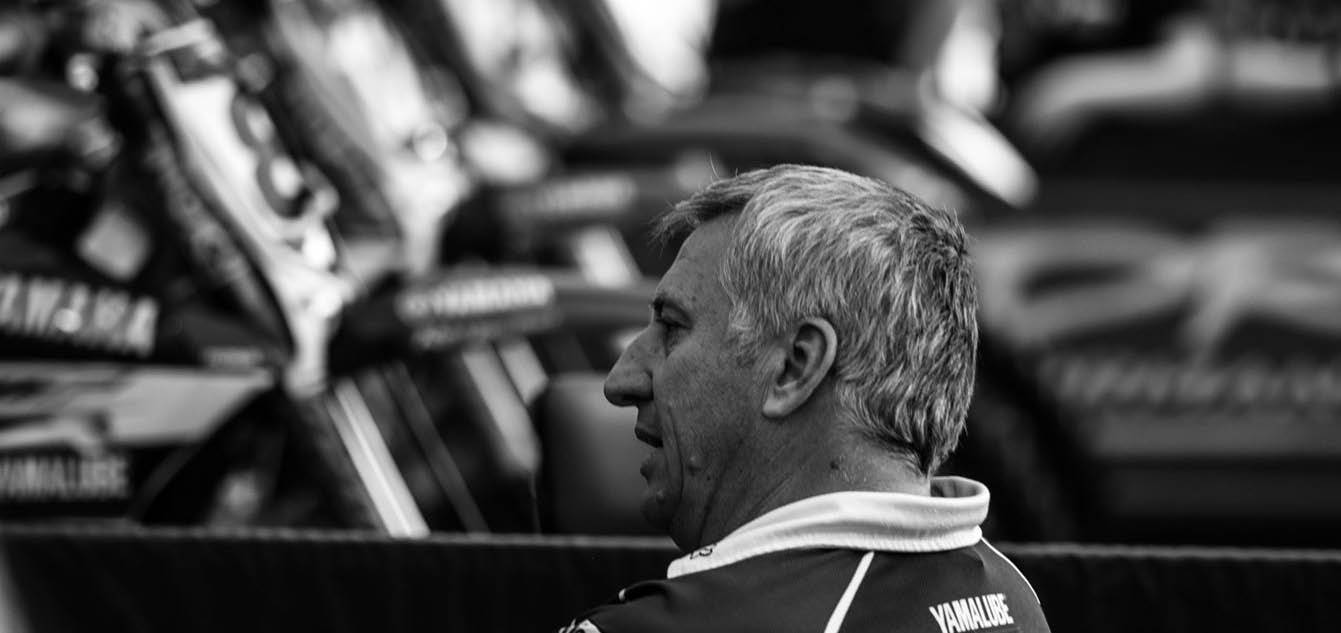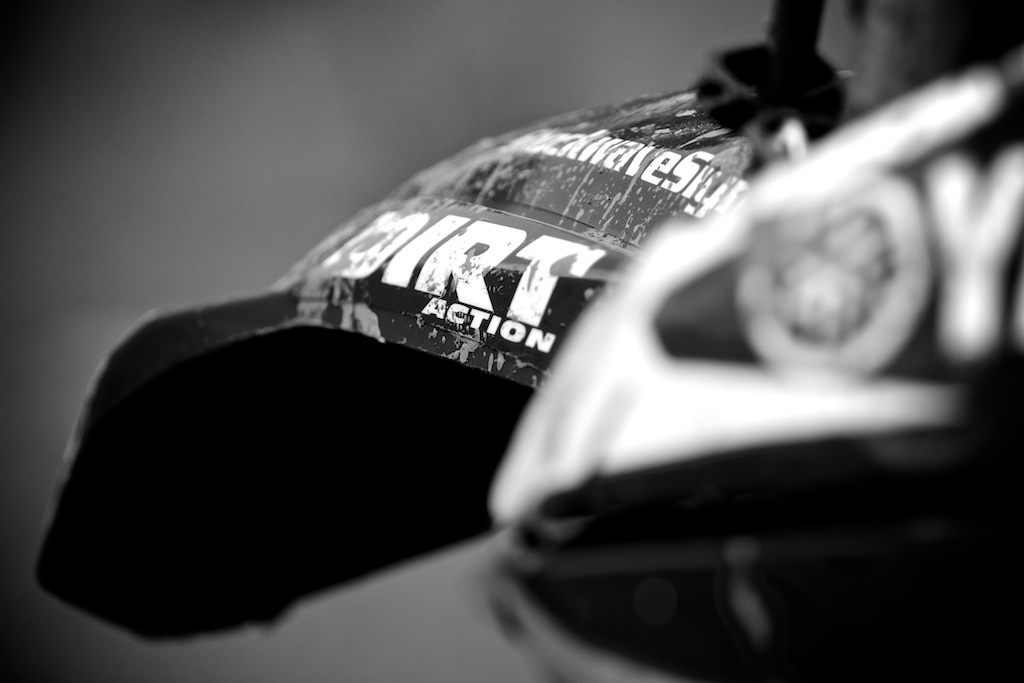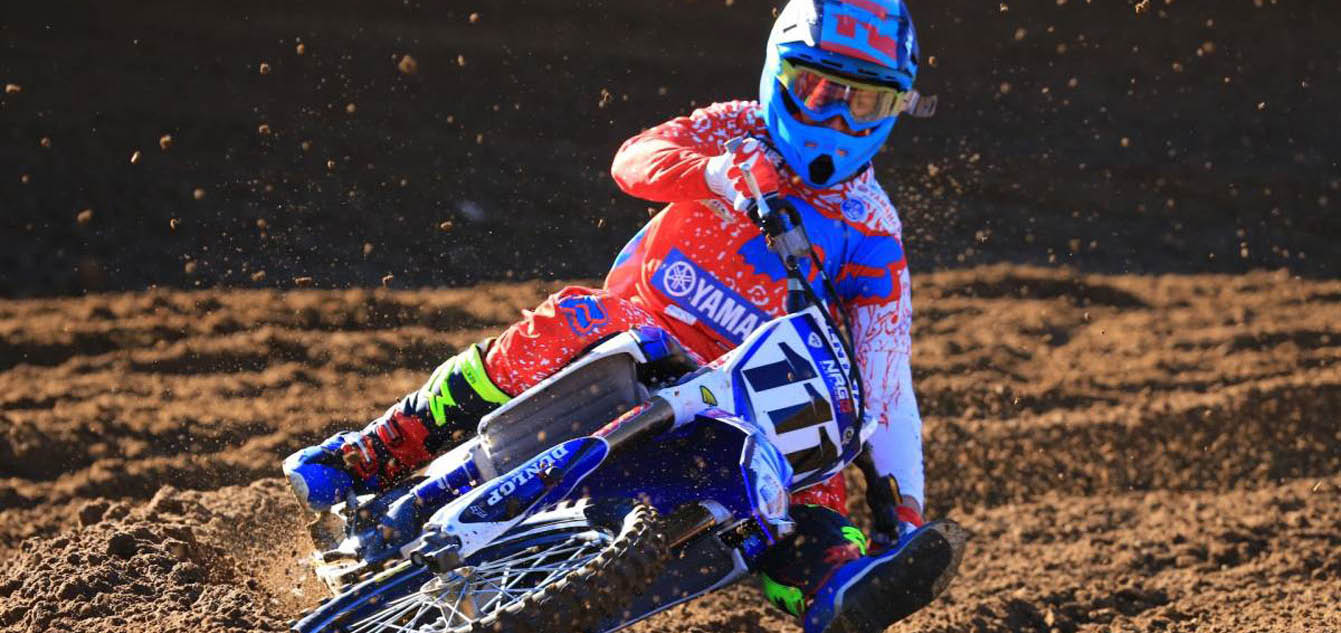
Twenty-thirteen was again kind to Yamaha and its motocross teams. Despite constant complaints that the YZ450F was big and ugly and the YZ250F was old and slow, somehow Yamaha Australia and its race teams continue to find a way to get their bikes at the pointy end of the field.
Billy Mackenzie took home third place on his CDR Yamaha YZ450F in the MX1 and Luke Styke smashed all comers on his Serco Yamaha YZ250F, while Jay Wilson went on a late-season charge to finish second on his GYTR Yamaha YZ250F. Three teams, three championship podiums.
All three Yamaha teams had a good working relationship and, unlike some other teams, did not compete on the track, so sharing information and development is never an issue. Each of them has its own R&D program but the knowledge gained is shared among the teams and their bikes are always as good as any in the pits.
So, with a full-house podium result across the three teams, we arranged a privateer racer the opportunity to throw a leg over one of the most exotic and successful race bikes in the country. Sam Duncanson was at the time a Queensland-based privateer who finished the Coolum round in equal 10th place and the first rider not racing from a team or a truck. He rode a production YZ450F, so what better guy to compare the haves with the have-nots?

– photo by Ashenhurst
BILLY MACKENZIE
The CDR Yamaha team has been far and away the most successful in Australia in recent years. While other teams have struggled with the 2010–13 model YZ450F, CDR Yamaha found a way to make it work for its riders and has had phenomenal success with the bike over the past few seasons.
With Jay Marmont moving on and Josh Coppins retiring in 2012, CDR Yamaha enlisted Billy Mackenzie to try to keep its win streak alive in the MX Nationals. Mackenzie went close and finished the year in third place behind Matt Moss and Todd Waters, consistency being his biggest issue. With Billy new to Yamaha, the team agrees it did take some time to fine-tune the bike to his liking.

DEVELOPMENT
CDR explains that getting power from the thundering YZ450F was easy. Too easy, in fact, and often they found themselves with way too much power for the rider to handle and had to calm the beast down. Over the past four seasons on the current-generation 450, CDR found a good base package and then just fined-tuned the motor to each particular rider. Marmont wanted aggression; Coppins wanted smooth and mellow. Mackenzie tried both and, after some trial and error as well as consultation with Coppins, a mellower setting was struck.
Maybe the biggest change for 2013 over the previous Marmont and Coppins models was the new python pipe. The wraparound exhaust added power and torque, moved some weight back in the frame and took some heat away from the frame as well. The full Marmont setup with the python pipe made the bike an animal to ride and was simply too much for Mackenzie.
A CDR Performance flowed head, a GYTR piston, Vortex fuel management system, Pro Circuit python exhaust as well as a wet-sumped clutch and Unifilter air filter are the major engine changes.
The suspension has long been the element of the bike that has taken the most time to set up. Again, previous experience with CDR riders allowed them to get a good base setting when Mackenzie came on board. Balance is always the key for any bike and Gary Benn spends hours just getting the basics of the bike right before cracking the suspension open.
The fork runs a .47kg fork spring, one up on stock, and the team uses special fork bottoms and coatings on the legs. Internal specs are handled by Benn himself after long hours of testing with the riders. The shock runs a 5.6kg spring while ride height is set at 100mm and uses a special preload adjuster for easier adjustment.
CDR has resorted back to a cable clutch after using and testing some hydraulic units over recent years. The cable feel is still light and easy and in a motocross situation the rider can feel if the clutch is burning up. Brakes are from Braking with the oversized 270mm rotor on the front with a Braking rear rotor. Hammerhead provided the rear brake pedal and shift lever.

photo by iKapture
WHAT SAM SAYS
“Just looking at Billy’s bike, I knew the bar setup was going to be a lot different from mine. He runs the standard clamp in the forward/back position, the same as me, but he also runs the 250F bar mounts, which are 5mm higher than stock, as well as a high-bend Renthal bar and rotates them forward. It looked uncomfortable and just sitting on the bike it felt weird but after a few laps I actually quite liked it and felt really comfortable on it.
“The motor is actually very quiet and so is the exhaust note. It doesn’t bark like most of the YZ450s I’ve ridden but the power is impressive. It rolls on so smooth and the torque is awesome. My bike tends to hit hard and explode whereas this bike is more a slow-burn sort of power that just oozes out of the motor. The torque and breadth of power mean gear changing is kept to a minimum and I rarely got out of third. Top-end power isn’t what I was expecting as the bike wouldn’t be far above stock. It holds power but doesn’t really rev. I guess the majority of power is right in the middle where you want to ride a 450.
“The suspension was very different from what I’m used to. The front of the bike has a rigid feel, almost like a brand-new bike that feels stiff and new. I liked the way it steered as it was very direct and the fork felt firm to me but the harder I rode it, the better it seemed to work.
“The rear of the bike was impressive as the bike really hooked up well on acceleration. You could feel the rear really tractor out of turns and it was really predictable on square-edge hits.
“I feel like I could do the same speed on my bike as I could on Billy’s in a short race but the longer the race went, the better I would feel on Billy’s bike. The motor works so effortlessly that you can conserve energy while generating the same speed.
“I really didn’t know what to expect before I rode this bike. I thought it would be aggressive, firmly suspended and quite hard to ride but it wasn’t the case. It was butter-smooth power; just more of it,. The suspension was obviously what Billy likes but I could certainly race with it and, although the bars were up there, I grew used to it pretty fast.”

– photo by iKapture
CDR YAMAHA YZ450F: SPEC CHECK
Engine: 449cc DOHC cam/4-valve 4-stroke
Head: CDR Performance flowed/modified
Cams: CDR Performance
Ignition: Vortex
Exhaust: Pro Circuit
Clutch: Wet sumped/GYTR
Piston: GYTR High Comp
Gearing: 14-51 / Renthal sprockets
Handlebars: Renthal/998 bend
Triple Clamps: Standard/standard offset
Fork: KYB with .47kg springs
Shock: KYB with 5.5kg spring
Tyres: Dunlop Factory
Chain: DID 520MX
Brakes: Front Braking 270mmm front rotor/Braking rear rotor
Graphics: One Industries
Seat Cover: One Industries

PRODUCTION YZ450F
The 2013-generation YZ450F polarised riders around the world. The majority were fine with the bike and felt it did everything well. Combined with its bulletproof reliability, it made for a sound investment.
The upper echelon of the racing fraternity, especially in the US, weren’t as fond of the bike and the downfall of James Stewart in seasons 2010–2012 were laid solely at the feet of the new YZ450F. He would then go on to crash his brains-out on a Suzuki.
The very public fallout from the bike had huge repercussions in the US and sales plummeted as a result, despite the fact that others did quite well on it. Maybe the biggest issue that faced the production bike was there were no yearly updates from the factory and the bike remained the same for four years as the GFC hit hard. The 2013 bike is essentially the 2010 bike and no manufacturer can sit on its hands for four years and expect to stay in front of the game.




